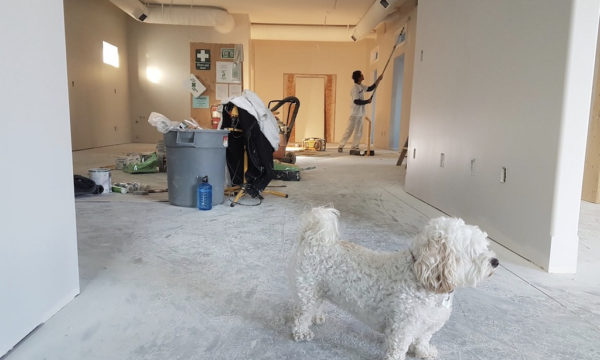Top ways to save money on your loft conversion in London

Loft conversions are one of the most effective ways to increase your home’s living space and add significant value, especially in a bustling city like London, where property prices are constantly on the rise. However, loft conversions can be a substantial financial commitment. From construction costs to materials and design, the expenses can quickly add up. Fortunately, there are plenty of ways to save money on your loft conversion without compromising on quality or style.
In this guide, we’ll explore some of the top strategies for saving money on your loft conversion in London, whether you’re planning a traditional dormer, an L-shaped dormer loft conversion, or a more complex L-shaped mansard loft conversion.
1. Carefully plan the conversion
One of the most important steps in saving money on your loft conversion is careful planning. Rushing into a project without a clear idea of what you want can lead to costly changes later on. Take the time to map out exactly how you want to use the space, whether it’s for an extra bedroom, a home office, or a new bathroom. Knowing your needs and sticking to a solid plan can help you avoid unnecessary expenses down the line.
A clear plan will also help when you approach loft conversion companies for quotes. Builders and contractors will provide more accurate estimates when they know precisely what the project entails. This can also reduce the risk of unexpected costs cropping up midway through the project.
2. Choose the right type of loft conversion
Not all loft conversions are created equal when it comes to cost. The price can vary significantly depending on the type of conversion you choose, so it’s crucial to select one that aligns with your budget and space requirements.
- Dormer Loft Conversions: This is one of the most popular and cost-effective types of loft conversions. Dormer lofts involve adding a vertical extension to the roof, which creates additional headspace and floor space without major structural alterations. A dormer loft is often the best option if you’re looking for a simple, budget-friendly way to create extra room.
- L shaped Dormer Loft Conversion: For those with Victorian or Edwardian properties, an L shaped dormer loft conversion could be a perfect solution. This conversion style creates more space by building two dormers that meet to form an L shape. It maximises usable space without drastically increasing costs, making it a popular choice in London where space is at a premium. While slightly more expensive than a standard dormer, it offers substantial living space and can still be cost-effective compared to more complex conversions.
- L shaped Mansard Loft Conversion: If you’re after a more visually striking and spacious conversion, an L shaped mansard loft conversion is an excellent option. Although it is generally more expensive than dormer options, the mansard roof design provides a steeply sloping structure that maximises headroom. However, the increased expense may be worth it if you’re aiming for a large, elegant space. Mansard conversions can add a premium feel to your home, which is something to consider if you’re looking to significantly boost your property value in the long run.
By choosing the right type of loft conversion that suits your needs and budget, you can save a significant amount of money. It’s also worth consulting with an experienced builder who can advise on the most cost-effective option for your property.
3. Work with an experienced loft conversion company
Hiring the right loft conversion company can make a world of difference in terms of cost control. While it may be tempting to go with the cheapest quote, this can often lead to poor workmanship, delays, or even having to re-do parts of the project later. In the long run, paying a little extra for a reputable and experienced loft conversion company will save you money by ensuring the project is completed efficiently, on time, and to a high standard.
An experienced contractor will also be well-versed in managing costs and finding areas where you can save money, such as sourcing materials at better prices or suggesting cost-effective design solutions.
4. Keep structural changes to a minimum
The more you alter your home’s structure during the conversion, the more expensive the project becomes. One of the most effective ways to save money is to minimise structural changes where possible. For example, keeping the existing roofline intact or avoiding major alterations to supporting walls can help reduce both labour and material costs.
If you’re planning a dormer loft conversion, sticking with a simple design rather than opting for a more elaborate structure can also help keep costs down. The same principle applies to an L shaped mansard loft conversion—focusing on the essentials can reduce the overall expense without sacrificing functionality.
5. Simplify the interior design
When it comes to the interior of your loft conversion, there are plenty of opportunities to cut costs. For instance, opting for standard materials and finishes rather than bespoke or high-end options can dramatically reduce your expenses. Simple, off-the-shelf solutions can look just as stylish as custom-made fittings if done correctly.
Additionally, consider tackling some of the finishing touches yourself. DIY painting or basic decorating can save you on labour costs while giving you more control over the final appearance of your new space.
6. Consider pre-fabricated solutions
Prefabricated loft components, such as premade dormer windows or modular staircases, can save both time and money on your project. These pre-built elements are often cheaper to produce and install compared to fully custom-made solutions. Moreover, using prefabricated elements can reduce the time your builders spend on-site, lowering labour costs.
7. Maximise natural light
One way to save money in the long run is to focus on maximising natural light in your loft conversion. Installing larger windows, skylights, or roof windows can reduce the need for artificial lighting, helping to keep your energy bills down. Natural light also makes a space feel larger and more open, which is especially important in smaller lofts.
For example, in an L-shaped dormer loft conversion, you can incorporate skylights or floor-to-ceiling windows to flood the space with light without significant additional costs. This simple adjustment not only adds value but also makes the space more comfortable to live in.
8. Shop around for materials
Materials can account for a large portion of your overall loft conversion costs, so it pays to shop around. Don’t rely on your builder to source everything—take the time to research prices for windows, flooring, and other materials yourself. You might find discounts or sales that could save you hundreds or even thousands of pounds.
Additionally, consider using reclaimed or recycled materials where possible. These can be much cheaper than new items and can add a unique, characterful touch to your loft conversion.
Conclusion
A loft conversion or loft refurbishment is a smart investment for London homeowners looking to expand their living space and increase property value. While the costs can seem daunting, there are many ways to keep expenses under control without sacrificing quality. By carefully planning your project, choosing the right type of conversion, and being smart about materials and labour, you can save money on your loft conversion while creating a beautiful and functional new space in your home.
Whether you opt for a simple dormer or a more elaborate L-shaped mansard loft conversion, following these tips will help you make the most of your budget while achieving a stunning result.
The editorial unit




















Facebook
Twitter
Instagram
YouTube
RSS